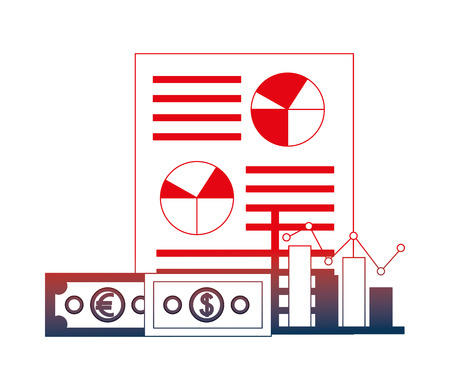Understanding the US Data Privacy Landscape
Data privacy is becoming a top priority for businesses across the United States. As technology evolves and more personal information is collected online, companies need to understand how to protect this data and comply with new laws. The US doesn’t have a single, nationwide law covering all aspects of data privacy. Instead, businesses must navigate a patchwork of federal and state rules.
The Difference Between Federal and State Regulations
Unlike the European Union’s GDPR, which is a comprehensive law applied across Europe, the US relies on a mix of federal and state regulations. Here’s a simple breakdown:
| Level | Main Laws/Regulations | What They Cover |
|---|---|---|
| Federal | HIPAA, GLBA, COPPA, FCRA | Specific industries or groups (healthcare, finance, children’s data, credit reporting) |
| State | CCPA (California), CPA (Colorado), VCDPA (Virginia), etc. | General consumer data privacy; varies by state |
The most well-known state law is the California Consumer Privacy Act (CCPA), which gives Californians rights over their personal information. Other states like Colorado and Virginia have passed similar laws, and more are considering them.
Recent Trends Impacting Businesses
In the last few years, there has been a clear trend toward stronger consumer protections and greater transparency. Key trends include:
- More States Taking Action: Several states are introducing their own data privacy laws. This means businesses may need to comply with multiple sets of rules depending on where their customers live.
- Bipartisan Push for Federal Law: There’s ongoing discussion in Congress about creating a federal privacy law that would apply nationwide. So far, no comprehensive bill has passed.
- Consumers Expect More Control: People want to know what data companies collect about them and how it’s used. They also want the right to delete or correct their information.
- Enforcement Is Increasing: Regulators are stepping up investigations and fines for companies that don’t follow the rules.
Why This Matters for Your Business
If your company handles personal data—whether from customers in California or anywhere else in the US—you need to stay on top of these changing laws. Failing to do so can lead to penalties, lawsuits, or loss of customer trust. Understanding both the federal baseline and stricter state requirements is essential for building a strong data privacy program in today’s environment.
2. CCPA Essentials: Key Requirements and Compliance Steps
What Is the CCPA?
The California Consumer Privacy Act (CCPA) is a landmark privacy law designed to give California residents more control over their personal information held by businesses. If your company collects, processes, or sells personal data of Californians, this law probably affects you—even if you’re based outside California.
Who Must Comply with CCPA?
The CCPA applies to for-profit businesses that meet any of these criteria:
| Requirement | Description |
|---|---|
| Annual Gross Revenue | Over $25 million |
| Personal Data Handling | Buys, receives, sells, or shares personal data of 100,000+ California consumers/households/devices per year |
| Revenue from Personal Data Sales | Makes 50% or more of annual revenue from selling Californians’ personal information |
Core Provisions: What Does the CCPA Require?
- Transparency: Tell consumers what personal information you collect and how you use it.
- Consumer Rights: Give people the right to access, delete, and opt out of the sale of their data.
- Data Security: Take reasonable steps to protect personal information from unauthorized access.
- No Discrimination: Don’t treat people differently for exercising their privacy rights.
- Notice at Collection: Inform consumers at or before data collection about their rights and your practices.
Practical Steps for CCPA Compliance
- Data Mapping: Identify what personal data you collect, process, and share—and where it lives in your systems.
- Update Privacy Policies: Ensure your privacy policy is clear, easy to find, and covers all required disclosures under CCPA.
- Create Request Mechanisms: Set up ways for consumers to submit requests to access, delete, or opt out (such as web forms or toll-free numbers).
- Train Your Staff: Make sure employees understand CCPA requirements and how to handle consumer requests appropriately.
- Review Vendor Contracts: Update contracts with service providers to ensure they also follow CCPA rules regarding personal data handling.
- Monitor & Document Compliance: Keep records of requests received and how they were handled. Regularly review your compliance program for updates.
A Quick Reference Table: Consumer Rights Under CCPA
| Right | Description | Your Obligation |
|---|---|---|
| The Right to Know | Learns what personal info is collected and why | Disclose categories/sources/purposes on request and in privacy policy |
| The Right to Delete | Requests deletion of personal info held by business (with some exceptions) | Delete info upon verified request unless an exception applies |
| The Right to Opt Out of Sale | Says no to the sale of their personal info to third parties | Add a “Do Not Sell My Personal Information” link on your website if applicable |
| The Right to Non-Discrimination | No penalty for exercising privacy rights under CCPA | Treat all consumers equally regardless of choices made under CCPA rights |

3. Strategizing Your Data Privacy Program
Understanding the US Data Privacy Landscape
To build a strong data privacy program, it’s crucial to understand the legal framework in the United States. The California Consumer Privacy Act (CCPA) is one of the most prominent laws, but other states have their own rules too. Plus, federal regulations like HIPAA or GLBA may apply depending on your industry. Start by identifying which laws impact your organization and what personal data you collect, store, and process.
Key Steps to Design and Implement Your Program
| Step | Action | Best Practice Tip |
|---|---|---|
| Data Mapping | Document what personal information you collect, where it’s stored, how it’s used, and who can access it. | Use automated tools for continuous tracking and update maps regularly. |
| Risk Assessment | Identify potential risks related to data handling and evaluate current security controls. | Perform annual reviews and update your risk register often. |
| Policy Development | Create clear privacy policies that reflect CCPA requirements and other relevant laws. | Write in plain English and make policies easy for employees and customers to understand. |
| Employee Training | Educate staff about privacy responsibilities, reporting incidents, and safe data handling practices. | Offer regular refresher courses with real-world scenarios. |
| User Rights Management | Set up processes for consumers to access, delete, or opt out of selling their personal data. | Use simple online forms and respond within legal timeframes (e.g., 45 days under CCPA). |
| Incident Response Plan | Develop a plan for responding to data breaches or privacy incidents. | Test your plan with tabletop exercises at least once a year. |
| Vendor Management | Review third-party partners’ privacy practices and require contracts with clear data protection terms. | Create a checklist for onboarding new vendors. |
| Ongoing Monitoring & Improvement | Regularly review your privacy program’s effectiveness and adapt to new legal changes or business needs. | Schedule quarterly audits and stay updated with state privacy law developments. |
Aligning Privacy Goals With Business Objectives
Your data privacy program should support your company’s goals—not just check off legal boxes. For example, if customer trust is important for your brand, highlight transparency in your privacy notices. If you’re planning to expand into new states or sectors, factor in future compliance needs early. Collaborate with IT, HR, marketing, and legal teams to make sure everyone’s on the same page. Building a privacy-first culture makes compliance smoother and helps turn privacy into a competitive advantage.
Simple Tips for Maintaining an Effective Program
- Keep documentation organized: Store all policies, training records, assessments, and incident reports in a secure digital folder that’s easy to update.
- Create feedback channels: Encourage staff and customers to share concerns or suggestions about your privacy practices.
- Leverage technology: Use compliance management software when possible to automate tasks like consent tracking or breach notification.
- Stay proactive: Monitor legislative updates from states like California, Colorado, Virginia, or Utah to avoid surprises.
- Praise good behavior: Recognize employees who demonstrate strong privacy awareness—it reinforces positive habits across your team.
With these practical steps and best practices tailored for the US environment, your organization can build a flexible and effective data privacy program that goes beyond just meeting CCPA requirements.
4. Beyond CCPA: Navigating Evolving State Regulations
While the California Consumer Privacy Act (CCPA) has set the standard for data privacy in the US, several other states are quickly catching up with their own privacy laws. For businesses operating across state lines, it’s essential to understand not just the CCPA, but also new regulations emerging in Virginia, Colorado, and more. Let’s break down what’s happening and how you can prepare your data privacy program for this growing patchwork of rules.
Key Upcoming State Privacy Laws
Below is a quick comparison of major state-level privacy laws that go into effect soon or have already started shaping compliance requirements:
| State | Law Name | Main Features | Effective Date |
|---|---|---|---|
| California | CCPA/CPRA | Consumer rights to access, delete, opt-out of sale; expanded under CPRA to include right to correct information and more business obligations | CCPA: Jan 2020 CPRA: Jan 2023 |
| Virginia | VCDPA (Virginia Consumer Data Protection Act) | User rights to access, correct, delete personal data; opt-out of targeted advertising and data sales; specific requirements for data protection assessments | Jan 2023 |
| Colorado | CPA (Colorado Privacy Act) | User rights similar to Virginia; strong focus on transparency, universal opt-out mechanism by July 2024, and regular data assessments for high-risk processing | July 2023 Universal Opt-Out: July 2024 |
| Connecticut & Utah (and others) | CTDPA, UCPA, etc. | Varying levels of user rights and business responsibilities; generally follow the same trends as above but with local differences in definitions and enforcement | 2023-2024 (varies by state) |
The Challenge: Growing Complexity Across States
No two state laws are exactly alike. Each brings its own definitions for personal information, unique consumer rights, and specific compliance steps. This means companies must adapt their privacy programs to fit each state where they collect or process residents’ data. Even small differences—like how “sale” is defined or the deadline for responding to consumer requests—can lead to big changes in your processes.
What Businesses Should Do Now
- Stay Updated: Assign someone on your team or work with legal counsel to track new state legislation. States like Texas, Florida, and New York are considering their own bills.
- Create Flexible Policies: Build your privacy program around core principles (transparency, choice, security) so it’s easier to adjust when new laws roll out.
- Leverage Technology: Use tools that help manage consumer requests and automate compliance tasks based on user location or preferences.
- Train Your Team: Regularly update staff on new rules so everyone—from marketing to IT—understands what’s required.
A Look Ahead: More States Joining In?
The trend is clear: more states will pass their own privacy laws over the next few years. By preparing now, your business can reduce risk and build trust with customers nationwide. The key is flexibility—keep your program agile so you’re ready for whatever comes next.
5. Aligning with Consumer Expectations and Building Trust
Why Consumer Trust Matters in Data Privacy
For US businesses, building trust with your customers is more important than ever. With laws like the CCPA and growing concerns about personal data, consumers expect transparency and respect for their privacy. Meeting these expectations not only keeps you compliant but also helps you stand out from the competition.
Actionable Strategies for Transparent Data Handling
Be Clear About What You Collect
Let your customers know exactly what data you collect and why. Use plain language—skip the legal jargon. Consider a simple table like the one below to summarize your data practices on your website:
| Type of Data Collected | Purpose | How Its Used |
|---|---|---|
| Email Address | Account Creation | To verify identity and send updates |
| Location Data | Personalized Offers | To show local deals or services |
| Purchase History | Customer Support & Recommendations | To improve service and suggest products |
Give Customers Control Over Their Data
Make it easy for users to access, change, or delete their personal information. Provide clear instructions and self-service options, such as:
- An account dashboard where users can update preferences
- A visible “Delete My Data” button or request form
- Email confirmations for any changes made to their data
Effective Consumer Communication Practices
Proactive Notifications and Updates
If there’s a change in your privacy policy or a data incident occurs, notify your customers right away. Use straightforward emails or app notifications so they’re never left in the dark.
User-Friendly Privacy Notices
Your privacy notice should be easy to find, short enough to read quickly, and written in everyday language. Consider using FAQs or short videos to explain key points.
Fostering Lasting Trust with US Customers
Consistency Builds Confidence
Your actions need to match your words. Deliver on your promises about privacy and respond promptly to customer questions or concerns.
Cultural Sensitivity and Local Norms Matter
In the US, people value choice and transparency. Respect diverse backgrounds by avoiding assumptions about customer preferences and giving them real options regarding their data.
| Trust-Building Action | How It Helps Your Brand |
|---|---|
| Honest Communication During Breaches | Shows accountability and respect for customers’ rights |
| User-Controlled Privacy Settings | Makes customers feel empowered |
| Visible Compliance Badges (e.g., CCPA logo) | Adds credibility and reassures visitors |
The Bottom Line: Put People First
If you focus on being open, respectful, and responsive, you’ll not only meet US privacy regulations like the CCPA—you’ll build a brand that customers trust and return to again and again.


